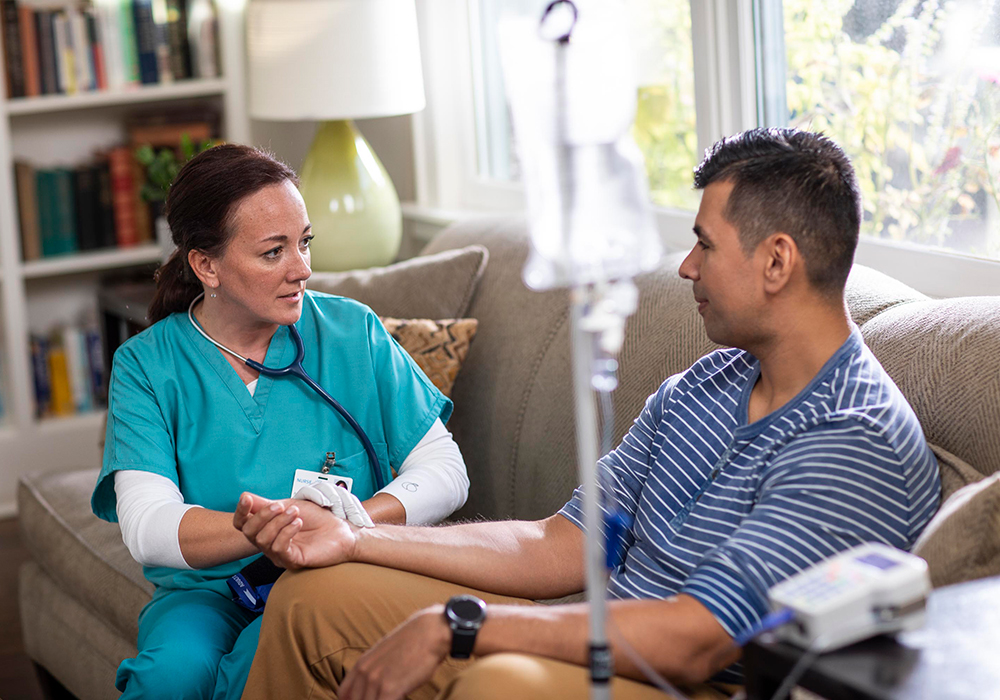I was able to sit down with Erin Hulbert, the director of the value-based services team at Optum® Life Sciences, to discuss what it takes to enable value-based contracting arrangements between life sciences manufacturers and the payer community.
To kick things off, Erin, as the resident expert on the design and measurement of value-based arrangements, what are you hearing from life sciences organizations when it comes to these contracts?
It comes down to a 50/50 mix of interest and hesitation. The wider health care industry has talked about tying payments and reimbursement to actual outcomes and value for years now, so I think there’s a lot of recognition that the life sciences space needs to get ready to adopt more sophisticated approaches, too.
Change is always difficult, but there are three true hurdles that our industry needs to overcome before these types of arrangements become more widespread.
- The first is figuring out what constitutes a good outcome. That means agreeing to a definition of metrics that are actually measurable in the real world.
- The second is actively following treated patients over time. In the U.S., people change insurers for any number of reasons, and your data doesn’t always follow you from one to the next. Your previous health plan has no way of knowing your current state of health or if one of these massively expensive treatments has worked for you.
- The third is figuring out all the details of outcomes measurement, reporting and financial reconciliation processes. This is one of those complex, headache-inducing messes that doesn’t have a simple answer, and I think clients on both the pharma and the payer sides are looking for ways to make this easier.
I’d love to get your perspective on outcomes-based contracts for gene therapies. How do they differ from the more traditional value-based arrangements that your team supports?
I’m excited to talk about this, as these therapies have the potential to be truly transformative. As such, there is great urgency for patients and their families to have access to these therapies.
But despite the great efficacy and safety results achieved in clinical trials, we need to learn more about how these therapies will perform in the real world and identify how to connect them to the patients who will benefit most.
One thing that is unique is that gene therapies are ultra-high-cost treatments, which means multiple years of resources are used or paid out upfront, under the assumption that the therapy works and achieves savings and benefits over time.
This is a big risk to the payer. First, they’re assuming that the therapy works, and second, they’re betting that the savings will be realized by that payer, since we know that patients in the U.S. change health plans often. So, we need to track patient outcomes over several years, even as they switch payers.
Second, most gene therapies in the market or in the pipeline focus on rare disease, so the eligible populations are small. That means we need meticulous patient-level outcomes tracking over time, which presents its own set of unique challenges.
Working with groups this small is very different from a more standard value-based contract where we often calculate a population statistic and apply that to all the claims for that therapy.
The small sample size introduces variability to all the stakeholders — including the payer and the manufacturer — and that means it is so important to capture every outcome, all the successes and the failures.
Complicating those efforts is the fact that the recipients of gene therapies generally have complex conditions. While they are often treated in centers of excellence, they are still being cared for by multiple providers and across different sites of care. Over time, they’re often covered by multiple payers.
To meaningfully measure outcomes, we need to consider the full range of health care services a patient receives.
Finally, it might sound a little paradoxical, but the health and economic impacts of rare disease are anything but rare. There are an estimated 7,000 rare diseases that collectively impact the lives of about 30 million Americans.

And the cost burden is enormous. A study released earlier this year pegged the impact at nearly a trillion dollars in 2019, spread across both medical and non-medical costs.
As more data become available, and as we learn more about rare diseases and the needs of these patients, the pipeline of treatments will grow as well. So we need to think about sustainable solutions to get these new therapies to the people that need them.
So many challenges associated with measuring, tracking and reporting on outcomes seem too big for any one party to try and solve on their own. Where do you think we can start?
For life sciences manufacturers, Optum has the data assets and expertise necessary to help design meaningful outcomes-based programs that enable market access and demonstrate the value of your therapy.
Our team has the experience and expertise to understand what is measurable from a real-world data perspective. We can help design balanced programs with robust protocols so that all parties have trust in the process and the analysis.

Mari-Pat Kalla
Vice President, Strategy and Product Innovation, Optum
Mari-Pat Kalla, vice president of Strategy and Product Innovation for Optum Life Sciences, has been leading product innovation in the clinical development, scientific consulting and outcomes-based contract space for the past five years.
Prior to joining Optum, Mari-Pat spent 15 years in new product marketing, market development and portfolio management roles in the medical technology and bio technology industries. She has a bachelor’s degree in chemical engineering from the University of Minnesota and an MBA from the UCLA Anderson School at Management.

Erin Hulbert
Director, Value-Based Services, Optum Life Sciences
Related content

How VBC can work for manufacturers

Reflections on PCMA's recent Annual Meeting

